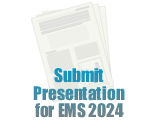.jpg) Advanced Instrumentation in Air Monitoring to Achieve Low-Level Detection
Advanced Instrumentation in Air Monitoring to Achieve Low-Level DetectionAir Monitoring, Methods, and Technology
Oral Presentation
Prepared by B. Ericson
Montrose Environmental Group, 2919 NORTH WILSON AVENUE, ROYAL OAK, MI, 48073, United States
Contact Information: [email protected]; 586-242-3599
ABSTRACT
Many facilities have traditionally struggled with determining their true emissions due to instrument capabilities. Actual emissions of formaldehyde and other compounds of interest from combustion and other emission sources can be lower than the detection limits of the standard test methods. Furthermore, existing emission factors can seriously over-estimate the emissions in many cases as they were developed using older, less sensitive methods. New enhancements to existing methods and emerging technologies can provide actual emission results at measurable and defendable levels. From traditional stack testing to fence-line monitoring, new and updated technologies can determine true concentrations of what lies in the air we breath.
We will discuss which new optimized techniques are currently being used to measure formaldehyde and other HAPs emissions at much lower concentrations than can be detected using the standard methods. These enhancements can provide continuous and real-time data useful in combustion tuning, compliance, engineering, and demonstration of combustion or post-combustion controls. These measurements have verified that some turbines and other sources emit much lower than the proposed formaldehyde and other HAPs limits. Data from several in-field testing programs will be reviewed to illustrate the issues with the standard methods and the improvements provided by the enhanced techniques.

